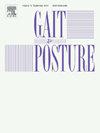Postoperative forward flexion loss in Adolescent Idiopathic Scoliosis: How it relates to the lowest instrumented vertebra and function
IF 2.2
3区 医学
Q3 NEUROSCIENCES
引用次数: 0
Abstract
Background
Spinal fusion is a common treatment for severe, progressive Adolescent Idiopathic Scoliosis (AIS). Maximum safe preservation of motion segments, particularly in the lumbar spine, is a widely accepted surgical goal. However, the specific relationship between reduced spinal motion and fusion length/lowest instrumented vertebra (LIV) and its effect on functional outcomes remains largely unexplored.
Research question
Is there a difference in trunk mobility and functional outcomes between thoracolumbar (TL) and thoracic-only (T) fusion groups? Additionally, is a greater loss of seated forward flexion trunk mobility after fusion in AIS patients associated with worse functional outcomes and a greater LIV score?
Methods
This study includes 37 AIS patients (11–29 y), with a mean follow-up of 1-year. Data collected preoperatively, at 3-months, and 1-year included structural, motion, and functional assessments (PROMs and activity tracking). These were compared between groups experiencing greater reduction in trunk mobility (high RoM loss) and those with lesser reduction of trunk mobility (low RoM loss), as well as between thoracolumbar (TL) and thoracic (T) fusion groups.
Results
At 3 months follow-up, the high RoM loss group demonstrated significantly lower SRS function scores (p = 0.028), and significantly higher LIV score (p = 0.032) compared to the low RoM loss group. No significant difference in fusion length between low and high RoM loss groups was found (p = 0.630). Notably, the TL fusion group exhibited greater percentage changes in trunk mobility at 3 months compared to the T fusion group, although these differences were not statistically significant. Moreover, SRS-function score and SC showed no significant differences between T and TL fusion groups.
Significance
These results suggest that a greater reduction in trunk mobility could lead to poorer functional outcomes at 3 months follow-up and may be associated with a more distally located LIV following fusion surgery in AIS patients.
青少年特发性脊柱侧凸术后前屈丧失:它与最低固定椎体和功能的关系
脊柱融合术是治疗严重进行性青少年特发性脊柱侧凸(AIS)的常用方法。最大限度地安全保护活动节段,特别是腰椎,是一个被广泛接受的手术目标。然而,脊柱运动减少与融合长度/最低固定椎体(LIV)之间的具体关系及其对功能结局的影响在很大程度上仍未被探索。研究问题:胸腰椎(TL)融合组和仅胸腰椎(T)融合组在躯干活动度和功能结果上有差异吗?此外,AIS患者在融合后坐位前屈躯干活动能力的丧失是否与更差的功能结局和更高的LIV评分相关?方法本研究纳入37例AIS患者(11-29岁 ),平均随访1年。术前、3个月和1年收集的数据包括结构、运动和功能评估(prom和活动跟踪)。这些数据在躯干活动度降低较大(高RoM损失)组和躯干活动度降低较小(低RoM损失)组之间以及胸腰段(TL)和胸段(T)融合组之间进行比较。结果随访3个月后,高RoM丢失组SRS功能评分显著低于低RoM丢失组(p = 0.028),LIV评分显著高于低RoM丢失组(p = 0.032)。低、高RoM损失组融合长度差异无统计学意义(p = 0.630)。值得注意的是,与T融合组相比,TL融合组在3个月时表现出更大的躯干活动度变化百分比,尽管这些差异没有统计学意义。此外,T和TL融合组的srs功能评分和SC无显著差异。这些结果表明,在3个月的随访中,躯干活动能力的较大减少可能导致较差的功能结果,并且可能与AIS患者融合手术后LIV位置较远有关。
本文章由计算机程序翻译,如有差异,请以英文原文为准。
求助全文
约1分钟内获得全文
求助全文
来源期刊

Gait & posture
医学-神经科学
CiteScore
4.70
自引率
12.50%
发文量
616
审稿时长
6 months
期刊介绍:
Gait & Posture is a vehicle for the publication of up-to-date basic and clinical research on all aspects of locomotion and balance.
The topics covered include: Techniques for the measurement of gait and posture, and the standardization of results presentation; Studies of normal and pathological gait; Treatment of gait and postural abnormalities; Biomechanical and theoretical approaches to gait and posture; Mathematical models of joint and muscle mechanics; Neurological and musculoskeletal function in gait and posture; The evolution of upright posture and bipedal locomotion; Adaptations of carrying loads, walking on uneven surfaces, climbing stairs etc; spinal biomechanics only if they are directly related to gait and/or posture and are of general interest to our readers; The effect of aging and development on gait and posture; Psychological and cultural aspects of gait; Patient education.
 求助内容:
求助内容: 应助结果提醒方式:
应助结果提醒方式:


